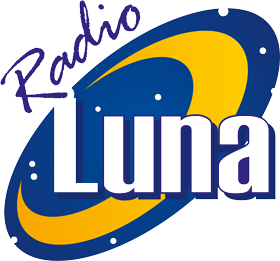However, the fact that most Americans are unaware of the association suggests effective evidence-based strategies are needed to increase awareness, encourage informed decision making, modify health behavior, and develop policies to reduce consumption. Increased ethanol consumption can induce microbial dysbiosis and bacterial overgrowth in the intestine [20]. This heightened bacterial presence may compromise the intestinal barrier resulting in ”gut leakiness” where the permeability of the intestinal lumen is high enough such that bacterial products including lipopolysaccharides and peptidoglycan move from the intestine into the blood [20,45]. Once in the blood these bacterial products easily reach the liver where a variety of cells are activated (endothelial cells, liver macrophages, stellate cells and hepatocytes) producing a chronic inflammatory environment [33], which may confer an increased risk of liver cancer [46]. Chronic alcohol consumption has been linked with decreased levels of retinoids in the liver [21], and low levels of retinol in the blood have been linked with higher risk of head and neck cancers [31]. Retinoids may also play a role in other signalling pathways implicated in cancer development, such as oestrogen and breast cancer [31].
Meeting the Mental Health Needs of Cancer Survivors
When MADB106 and CRNK-16 cells were incubated with ethanol in vitro, the numbers of these cells were reduced after 5 days. These effects were significant for MADB106 cells at ethanol concentrations of 0.2 percent, 0.5 percent, and 1.0 percent ethanol and for CRNK-16 cells at 0.5 percent and 1.0 percent ethanol. Ethanol had no effect in rats that were depleted of NK cells, and metastasis was not affected after injection of the NK-insensitive C4047 rat colon cancer cell line (Ben-Eliyahu et al. 1996).
of cervical cancer cases attributable to reversible risk factors
As ROS are highly reactive, their presence can lead to lipid peroxidation producing aldehydes which can bind to DNA forming etheno-DNA adducts [29,30]. These ethe-DNA adducts, namely 1,N6-ethenodeoxyadenosine and 3,N4-ethenodeoxycytidine, are highly mutagenic as they lead to mutations in several genes involved in key cell cycle regulation and tumour suppression [21]. He also emphasized the role that certain viruses, such as HPV — which people can prevent through vaccination and cervical screening — play in cancer risk. Upon analysis, researchers found that cigarette smoking was attributable to the largest percentage of cancer cases, at almost 20%.
Tumor Growth and Metastasis
In focus group discussions, some participants identified that zero alcohol products could act as a gateway to future alcohol use by enabling young people to become accustomed to the taste of alcoholic products. Smoking was correlated to 56% of all potentially preventable cancers in men and about 40% of preventable cancer cases in women. “Drinking trends show that alcohol use is increasing in countries in sub-Saharan Africa. We predict that the number of cases of cancer in Southern https://rehabliving.net/why-women-are-drinking-more/ Africa will increase by two-thirds over the next 20 years, and in Eastern Africa, cases will double,” says Rumgay. “Cutting back one drink is a risk reduction, but the greatest risk reduction is going from three drinks to zero,” Bevers says. Men and women who choose to drink have different serving recommendations because of how their bodies respond to and break down alcohol. DSelf-reported current medication prescription and/or treatment in the Personal Medical History survey.
Alcohol came in third, with 5% of cases in men and women over 30 attributable to drinking — perhaps a surprising result to the public, given low awareness of the links between drinking and cancer. In a national survey of adults in the U.S. in 2020, less than a third of respondents knew alcohol increased cancer risk. At least 4% of the world’s newly diagnosed cases of esophageal, mouth, larynx, colon, rectum, liver and breast cancers in 2020, or 741,300 people, can be attributed to drinking alcohol, according to a study in the July 13 edition of Lancet Oncology. Of the 172,600 alcohol-related cancer cases diagnosed in women, the vast majority, or 98,300 cases, were breast cancer. As with other meta-analyses of published studies, the analysis presented here has various limitations and strengths.
For example, inflammation can result in oxidative stress, but inflammation is a reaction by the immune system which is itself compromised by alcohol use. Furthermore, DNA damage can occur through exposure to acetaldehyde and ROS which are both produced through CYP2E1 activity, with acetaldehyde also a product of ADH activity. Other potential pathways have been proposed including the dysregulation of carnitine metabolism [49]. We have only covered carcinogenesis in this review, but alcohol likely alters, through these pathways and others, other functions in the body which render it more susceptible to other diseases and injuries, as discussed in other articles in this Special Issue.
However, there exists a large gap in knowledge as to how alcohol consumption affects anti-tumor immunity, and this severely hampers the development of effective immunotherapeutic approaches to treat cancer in people who have immune deficits due to chronic alcohol abuse. A mounting body of evidence suggest that cancer initiation and progression is closely linked to oxidative stress. The metabolism of ethanol leads to generation of ROS that serve as primary carcinogens due to their genotoxic effects on diverse cellular processes.
- In 2016, it resulted in an estimated 5.1% of the global burden of disease and injury, and 5.3% of deaths (1).
- Acetaldehyde concentrations in the saliva of drinkers are between 10 and 100 times higher than in the blood; this is further doubled in smokers who drink alcohol as tobacco smoke contains high levels of acetaldehyde [21].
- Residual confounding by other risk factors, such as smoking, overweight and diabetes, is a major concern.
- However, there exists a large gap in knowledge as to how alcohol consumption affects anti-tumor immunity, and this severely hampers the development of effective immunotherapeutic approaches to treat cancer in people who have immune deficits due to chronic alcohol abuse.
The Centers for Disease Control and Prevention (CDC) writes that even if a man and woman drink the same amount of alcohol, the woman will usually have a higher blood alcohol level. And not only do women usually experience the immediate effects of alcohol more quickly than men, but they are also at a higher risk for alcohol’s long-term health effects. The researchers cited the change in public perceptions and tighter regulations for tobacco, which show the importance of public health campaigns and physicians explaining risks to their patients. Dr. Klein noted, “[In] less than half a century, we’ve seen major changes in the way people think about tobacco.” Nearly 4% of cancers diagnosed worldwide in 2020 can be attributed to alcohol consumption, according to the World Health Organization. In the United States alone, about 75,000 cancer cases and 19,000 cancer deaths are estimated to be linked to alcohol each year.
Also in line with the previous study,20 we found that, among current drinkers, survivors who were younger, men, Hispanic, and ever smokers were more likely to exceed moderate drinking or binge drink. Using validated AUDIT-C scores that incorporate frequency of drinking, quantity of drinking, and binge drinking, we reported for the first time, to our knowledge, that 38.3% of cancer survivors in this diverse US cohort engaged in hazardous drinking. Although more studies are warranted, the high prevalence of cancer survivors engaged in hazardous drinking highlights the need for immediate interventions to reduce alcohol intake among US cancer survivors. There is accumulating evidence that alcohol might increase the risk of cancer of the pancreas and prostate. With regard to pancreatic cancer, heavy consumption of alcohol increased the risk by 19% compared with nondrinkers or occasional drinkers. Residual confounding by other risk factors, such as smoking, overweight and diabetes, is a major concern.
There are several mechanistic pathways by which the consumption of alcohol, as ethanol, is known to cause cancer, though some are still not fully understood. Ethanol’s metabolite acetaldehyde can cause DNA damage and block DNA synthesis and repair, whilst both ethanol and acetaldehyde can disrupt DNA methylation. Ethanol can also induce inflammation and oxidative stress leading to lipid peroxidation and further DNA damage.
Evidence that directly implicates immune cells from both the innate and adaptive immune systems in control of cancer growth and progression continues to accumulate. This has stimulated research directed toward developing effective immunotherapeutic approaches to treat cancer (for a review of the tumor immune response as well as approaches being taken to develop immunotherapeutics for cancer, see Harris and Drake 2013). In summary, several reports indicate that alcohol consumption decreases survival of patients with cancer, whereas other studies did not observe this association. The effect of alcohol consumption on mortality of women with breast cancer is particularly complex and seems to differ according to age, estrogen receptor status, and extent of alcohol drinking. Clearly, more breast cancer–specific studies are needed that correlate mortality with the properties of the cancer and the level of alcohol consumption.
However, these bacteria have limited capacity to break acetaldehyde down further into its non-harmful compound acetate, thus the oral epithelia are further exposed to acetaldehyde [21,44]. Acetaldehyde concentrations in the saliva of drinkers are between 10 and 100 times higher than in the blood; this is further doubled in smokers who drink alcohol as tobacco smoke contains high levels of acetaldehyde [21]. ERs are important https://rehabliving.net/ transcription factors within cells and may provide the main pathway by which alcohol promotes breast tumour growth [40]. Elevated concentrations of oestrogen due to alcohol use may lead to increased transcriptional activity of ER (up to 15 times higher than normal activity), resulting in proliferation of ER+ cells [39]. Inflammation is a key pathway to cancer progression at several sites and is enhanced by alcohol use.
The significantly greater risks seen in men carrying the low-alcohol tolerability ALDH2 gene variant who still drank regularly suggests that greater accumulation of acetaldehyde may directly increase cancer risk. The researchers categorized alcohol use based on responses to several alcohol-specific questions. They also used an assessment tool, called AUDIT-C, that was developed to study drinking behavior. According to the federal government’s Dietary Guidelines for Americans, 2020–2025, individuals who do not drink alcohol should not start drinking for any reason. The Dietary Guidelines also recommends that people who drink alcohol do so in moderation by limiting consumption to 2 drinks or less in a day for men and 1 drink or less in a day for women.
In contrast to the extensive studies involving T cells in anti-tumor immunity, the knowledge of B cells in anti-tumor immune responses are limited and controversial. One of the studies reported that B cells enhanced T cell mediated anti-tumor immunity by producing anti-tumor antibody and presenting tumor-antigen to T cells [159]. They also showed that depletion of B cells enhanced B16 melanoma metastasis to the lung by inhibiting CD8+ T cell proliferation and Th1 cytokine production. On contrary, there are evidences suggesting that B-cell depletion could therapeutically enhance anti-tumor immune responses by decreasing IL-10 production from B cells [160]. In line with this report, another study showed that depletion of B cells exhibiting CD5+CD1dhi IL-10+ phenotype inhibited tumor progression and enhanced anti-tumor immunity [161,162].
The studies that are available examined the immune responses in patients with head and neck cancer. These patients often are immunodeficient because of their alcohol abuse and heavy tobacco use; however, the contribution of continued alcohol abuse to altered immune parameters in these patients has largely not been assessed. Chemokines and their receptors often are altered in cancer patients, and their importance in cancer progression has been the subject of several recent reviews (Aldinucci and Colombatti 2014; de Oliveira et al. 2014; Sarvaiya et al. 2013).








